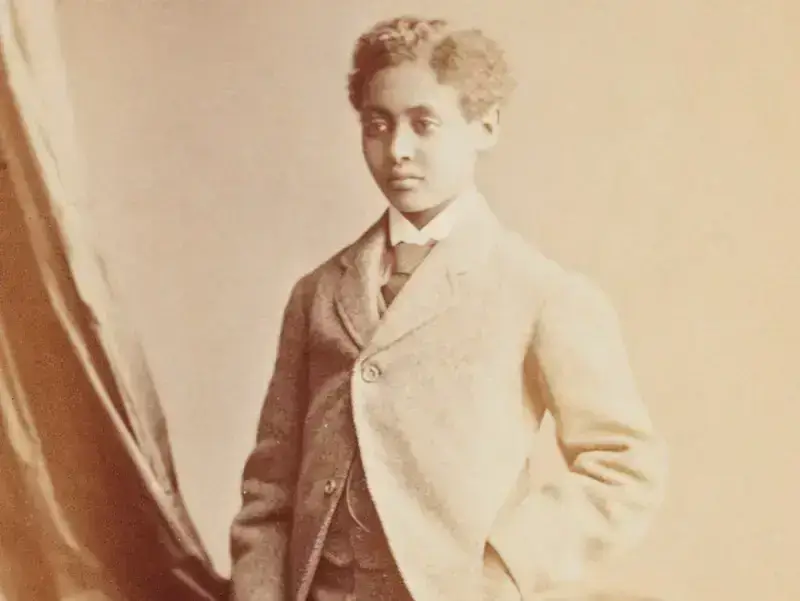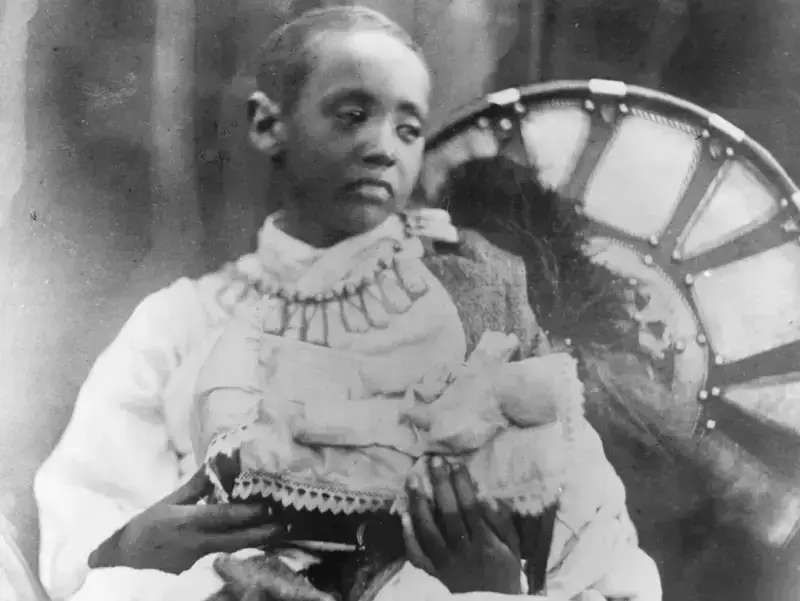Isaiah Reynolds/Insider

In 1868, around 13,000 British and Indian troops and additional auxiliary workers arrived in Magdala to rescue British hostages who had been held captive by Emperor Tewodros II.

The Emperor had held the hostages after asking the British government for a military alliance, hoping to have support against internal rebellions he faced in Ethiopia and from neighboring rivals. The British never answered his request.
The battle concluded with the release of the captive British missionaries and the death of the Emperor, who took his own life to evade surrender or imprisonment.

It is thought that 700 Abyssinians died and 1,000 more were left injured.
With a war victory on their side, thousands of British auxiliary workers committed the largest looting of artifacts in Ethiopia’s history.
In the midst of the looting, British soldiers also took Prince Alemayehu, who was 7-years-old at the time.

Tristram Speedy, a British officer in the Battle of Magdala, took the prince and his mother, Empress Tiruwork Wube, to Britain. The prince was orphaned after the empress died on the voyage to Britain and all other Ethiopians on the ships were sent home.
The prince was taken to Speedy’s home in Britain and presented to Queen Victoria, who took a special liking to him. Speedy was given a stipend for Alemayehu’s education and served as his guardian.

Speedy would often imitate Ethiopian warriors by wearing traditional lion skins in his home of the Isle of Wight.
While studying at elite preparatory schools, Alemayehu was ostracized and condemned as a “royal savage.”

Portraits show him as a frail and stoic figure — written accounts portray him as a deeply unhappy boy, perpetually scarred by the severed ties from his homeland and forced acclimation to Britain.

Queen Victoria, upon learning of his death, request for him to be buried in Saint George’s Chapel at Windsor and expressed her mourning in a diary entry:
“Very grieved & shocked to hear by telegram, that good Alamayou had passed away this morning. It is too sad! All alone, in a strange country, without a single person or relative belonging to him.”
In recent years, Ethiopians have campaigned for the Prince’s rightful burial in his motherland.

A 2007 request from then-President of Ethiopia, Girme Wolde-Giorgis, was flatly rejected by Buckingham Palace. The Ethiopian Embassy in London has committed to “redouble efforts to realise the repatriation of the remains of Prince Alemayehu.”
Despite the crown’s hesitancy, the calls for a proper repatriation of the prince, the looted items of Magdala, and other culturally significant items around the world continue to grow.



